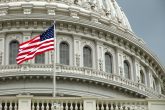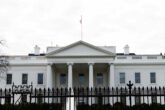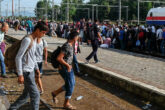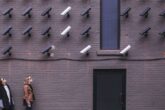September 11, 2020
The 9/11 Commission Report, the Pandemic and the Future of Homeland Security
Lawfare has from time to time allowed me, as a longtime contributor, to use this space to acknowledge the anniversary of the Sept. 11, 2001, terrorist attacks, and reflect on some aspect of the 9/11 Commission Report, the definitive accounting of the federal government’s failure to prevent the attacks on New York and Washington, D.C., formally titled the “Final Report of the National Commission on Terrorist Attacks Upon the United States.” The 9/11 attacks were formative for me: I started that day working on counterterrorism matters at my desk at Main Justice, and by midmorning was dispatched to the FBI’s Strategic Information and Operations Center across the street to stand up a temporary station for Department of Justice lawyers handling emergency foreign intelligence surveillance applications. In the decade since leaving government service, I’ve often returned to the report each September, before a semester of teaching begins, to cull from its narrative and recommendations observations about the United States’s present national and homeland security challenges.
The report was specific in its remit to reshape government to address the terrorism threats that existed at the time, but its lessons withstand the passage of time.
The report was specific in its remit to reshape government to address the terrorism threats that existed at the time, but its lessons withstand the passage of time. When it was issued in 2004, the report served two purposes: one, to provide a definitive factual narrative of the events and circumstances that led up to the attacks, and two, to provide recommendations about how to structure the federal government to protect against a future terrorist attack. But as time goes on, the report has come to serve an important third role: as a warning to the American public and its leaders about the importance of addressing emerging threats before it is too late. As I write this year’s reflection—sitting in our home’s dining room, which I’ve spent the weekend converting to a combined home office and middle school homeroom because schools and offices remain mostly shuttered due to the federal government’s failed response to the coronavirus—I have three concurrent, interrelated observations to share. The first concerns the pandemic; the second, the Department of Homeland Security and its continued viability; and the third, the capacity of the U.S. national and homeland security community to address emerging threats and challenges.
Read the full article in Lawfare.
More from CNAS
-
Securing U.S. Democracy Initiative
Sharper: National Security in a Divided CongressFollowing the 2022 midterm elections, a new U.S. Congress was sworn in, resulting in a divided House and Senate with narrow margins. Key national security legislative items ar...
By Anna Pederson & Cameron Edinburgh
-
Securing U.S. Democracy Initiative
Schedule F: An Unwelcome ResurgenceThe U.S. government is able to take on high-risk, high-cost ventures—nuclear security, pandemic response, environmental clean-up, food safety, and more—because civil servants ...
By Loren DeJonge Schulman
-
Securing U.S. Democracy Initiative
Western Hemisphere Migration is a Long-Term ChallengeAddressing western hemisphere migration should be a national and international priority....
By Carrie Cordero & Cris Ramón
-
Securing U.S. Democracy Initiative
The Lawfare Podcast: Klein and Cordero on the Latest FISA NumbersTo discuss the latest in FISA transparency news, the data and what it all means, Benjamin Wittes sat down on Lawfare Live with Carrie Cordero of the Center for a New American ...
By Carrie Cordero




